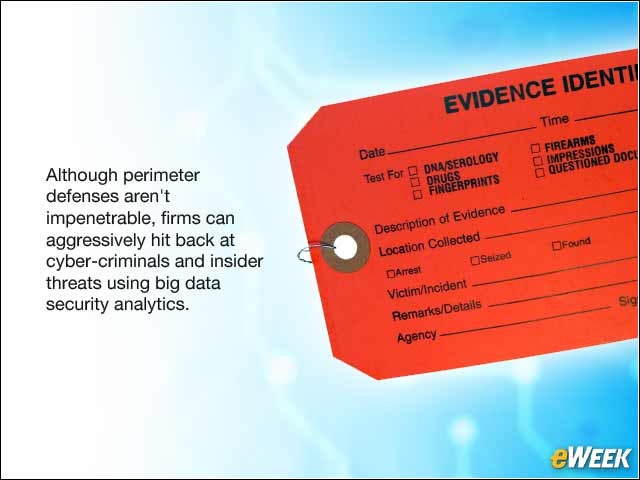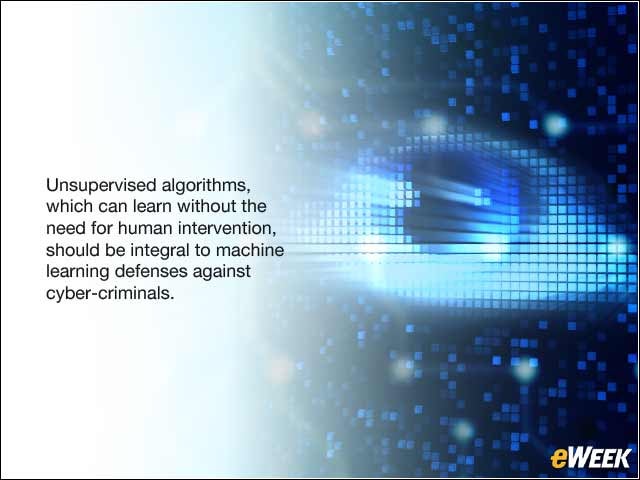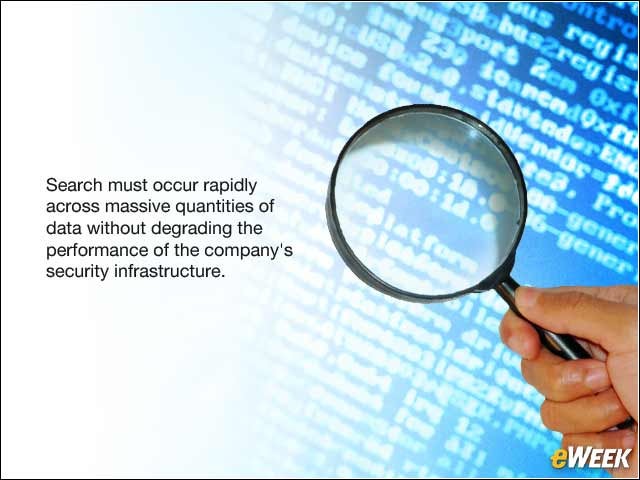eWEEK content and product recommendations are editorially independent. We may make money when you click on links to our partners. Learn More.
1Eight Tactics for Circumventing Insider Security Threats
2Use Machine Learning
With the massive number of potential threats security monitoring systems are flagging, it’s no wonder that analysts are suffering from alert overload. Forget about trying to connect the dots and discovering multi-stage attacks because deciding which of the events need investigation is daunting. For example, of the 166 million security events at the 2012 London Olympics, only 783 required investigation (SC Magazine, July 2015). When working with data at such massive scale, machine learning is the only way to effectively offload the work of accurately identifying the security events that need human attention.
3Do It Automatically
Profiling across time and detecting advanced attacks should happen continuously and automatically. It’s not something that security professionals (who are in short supply) should have to initiate manually. Given that cyber-attacks are constantly evolving, it’s important to automatically identify changing attack patterns without the need for labeled training samples. That means unsupervised algorithms, which can learn without the need for human intervention, must be integral to any machine learning-based defense against cyber-criminals.
4Use Big Data Analytics
Big data gives enterprises capabilities that were previously reserved for organizations with huge security budgets. Low-cost distributed computing enables advanced machine learning analytics, data correlation and rapid search across massive volumes of data from disparate sources. Low-cost storage means relevant security data can be retained for far longer periods than what was possible with traditional security monitoring solutions. This enables analysts to perform historical impact assessments and threat hunting further in the past, which is important, given that the median time to discover advanced attacks is currently 205 days (M-Trends 2015: “A View from the Front Lines,” FireEye, February 2015).
5Integrate With Existing Infrastructure
Enterprises spend heavily on security and IT, so any solution for combating advanced attacks should leverage these investments. Logs should be ingestible natively from the source (such as Domain Name System logs) or from a security information and event management (SIEM) solution. New solutions should be able to stand on their own, but most users don’t want another management console, so application programming interfaces that make it easy to incorporate your security analytics solution’s output into the console of your choice (such as your SIEM console) are a must.
6Fuse Relevant Security Data
Organizations have large amounts of log, flow, packet, file, alert and threat feed data, which can yield intelligence for thwarting cyber-criminals. How? Correlate data so it is attributed to a user, a host or an application. Then distill it into summaries that provide rich context (authentication and device use histories, port-protocol relationships, etc.). Security analytics that use varied security data sources provide better visibility than do analytics using a single data source. Using correlation and distillation, security professionals are better positioned to discover hidden adversaries.
7Profile Across Time
Multi-stage attacks stay under the radar by performing actions that individually do not rise to the level of a security alert. To detect attacks where the alerts do not rise above the noise requires reviewing threat information over extended periods and stringing together seemingly unrelated actions.
8Maintain Layered Forensics
Even with automatic machine learning-based systems, a security professional’s intervention is required. They need to perform spot checks to ensure that defense systems are working properly and also to make the final decision on whether an event is real. Forensics provides security analysts with the context as to why something was flagged but should include more than just packet data—it needs to include machine logs, packet header analysis, the time history of actions, outputs from machine learning algorithms and more. Hence the term layered forensics.
9Ensure Rapid Search
“Have my defenses been breached?” is a question security analysts must be able to answer, and quickly. They can answer that question by rapidly testing hypotheses, which requires search, coupled with forensics, to provide the context across the raw data and any computed data. Given the magnitude of data inundating organizations, and the silos within which it typically resides, search is often a tedious exercise in time wasting and comes to a halt. Search must happen across massive amounts of data, executing rapidly without degrading the performance of the existing security infrastructure.








